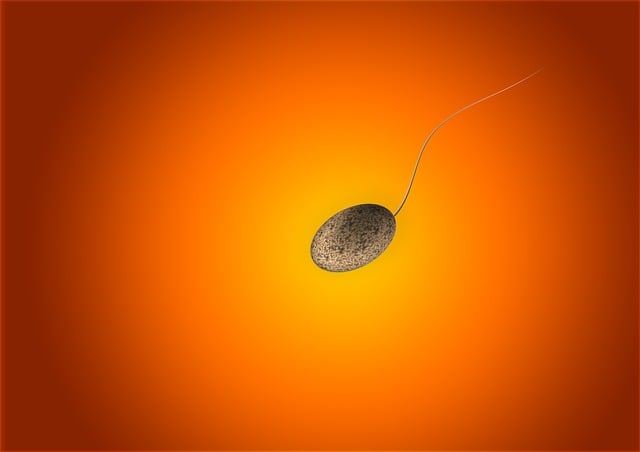Serum-free media revolutionizes stem cell culture media, providing xeno-free, consistent environments for long-term stem cell proliferation and differentiation without variability. Optimized formulations, precise pH balance, and tailored supplements enable undifferentiated growth, self-renewal, and pluripotency maintenance, advancing regenerative medicine. Serum-free solutions enhance quality control, foster lab collaboration, and speed clinical application translation. Choosing the right stem cell culture media is crucial for laboratory success, directly impacting cellular health, proliferation, and differentiation. Modern media options cater to diverse research needs, unlocking new possibilities in stem cell studies.
Discover the revolutionary world of serum-free media solutions, a game-changer in biological research. This article explores the essential role of stem cell culture media in providing optimal cellular growth and functionality without animal-derived components. We delve into the benefits, diverse applications, and considerations for selecting tailored serum-free media for your laboratory. By understanding these advancements, researchers can enhance efficiency and innovation in various fields.
- Understanding Serum-Free Media: An Overview
- Stem Cell Culture Media: The Key Player
- Benefits and Applications of Serum-Free Solutions
- Choosing the Right Serum-Free Media for Your Lab
Understanding Serum-Free Media: An Overview

Serum-free media refers to specialized liquid mixtures designed to support the growth and proliferation of cells in vitro, particularly in the context of stem cell culture media. Unlike traditional fetal bovine serum (FBS), which has been the mainstay for cell cultivation, serum-free formulations offer a more controlled and consistent environment for cellular processes. This is achieved by eliminating animal-derived components, ensuring xeno-free stem cell culture systems that are free from potential contaminants and immune reactions.
Serum-free media solutions cater to various needs in stem cell research and applications. They facilitate the media formulations for clonal expansion of stem cells, enabling long-term stem cell culture without the risk of contamination or lot-to-lot variability associated with animal sera. These solutions are pivotal in advancing regenerative medicine by providing consistent and reliable long-term stem cell culture solutions, crucial for expanding stem cell populations for therapeutic purposes.
Stem Cell Culture Media: The Key Player

Stem Cell Culture Media plays a pivotal role in ensuring the successful proliferation and differentiation of these versatile cells. This specialized media acts as the cellular environment, providing essential nutrients, growth factors, and support structures that mimic the natural conditions needed for stem cell survival and longevity. Unlike traditional cell culture media, stem cell culture media is meticulously designed to accommodate the unique requirements of stem cells, encompassing considerations such as media supplementation for optimal survival, precise pH balance adjustments for ideal metabolic activity, and tailored formulations to encourage undifferentiated growth.
The art of crafting effective stem cell media involves balancing various components, including specialized nutrients, hormones, and signaling molecules. These elements are carefully optimized to promote self-renewal, maintain pluripotency, and direct cellular differentiation along specific pathways. Through meticulous adjustments in media formulations, researchers can fine-tune the microenvironment, leading to enhanced stem cell functionality and opening doors to groundbreaking applications in regenerative medicine and beyond.
Benefits and Applications of Serum-Free Solutions

Serum-free solutions have revolutionized stem cell culture media, offering numerous benefits and expanding the applications of stem cell research. One of the key advantages is their ability to provide a more controlled and consistent environment for cell growth, eliminating potential variability introduced by animal-derived serums. This is particularly crucial for maintaining the purity and stability of stem cells, which are highly sensitive to changes in their microenvironment.
These solutions are especially valuable in media screening for stem cell applications, ensuring rigorous quality control over stem cell maintenance media formulations. By removing animal components, researchers can conduct more accurate assessments of cellular responses, foster better collaboration among laboratories, and ultimately expedite the translation of stem cell research into clinical settings.
Choosing the Right Serum-Free Media for Your Lab

Choosing the appropriate serum-free media is a pivotal decision for laboratories engaged in stem cell research. The right media formulation can significantly impact cellular health, proliferation, and differentiation. When selecting stem cell culture media, researchers must consider specific requirements based on their experimental goals and cell types. For instance, certain cells thrive in serum-free and mitogen-free environments to avoid contamination and ensure purity. This approach is particularly relevant for ethical considerations in stem cell research, where controlling external factors like serum components is crucial to maintain the integrity of these versatile cells.
Media formulations play a vital role in stem cell banking, enabling long-term storage and preservation of these precious cellular resources. The choice should align with the intended application, whether it’s for expansion, differentiation, or maintenance. Modern stem cell culture media offers diverse options tailored to meet the unique needs of various labs, allowing them to optimize their research and unlock new possibilities in this exciting field.
Serum-free media, particularly stem cell culture media, offers a versatile and beneficial alternative in biological research and lab applications. By eliminating serum from cultivation solutions, researchers can achieve more consistent and controlled environments for cell growth. This advancement is significant in various fields, enabling enhanced cell viability, reduced variability, and the potential to study specific cellular responses without external factors. With tailored serum-free media options available, labs can now select the ideal solution for their unique needs, pushing the boundaries of discovery and innovation in stem cell culture research.














